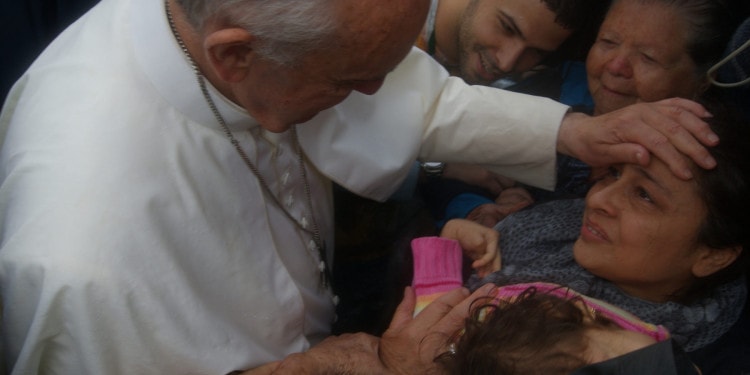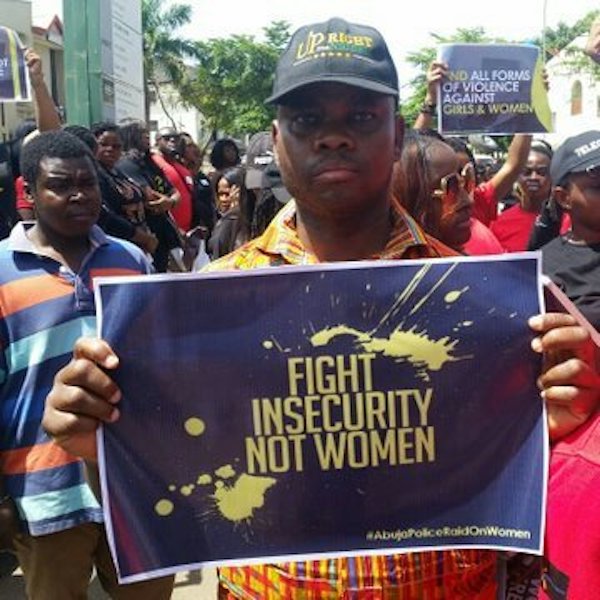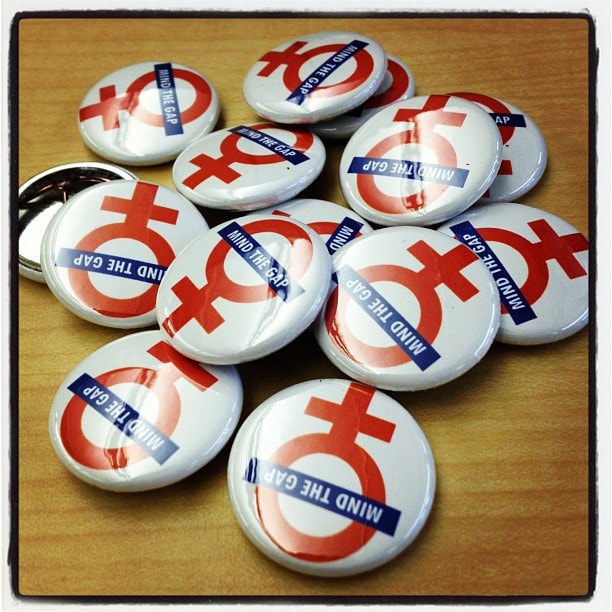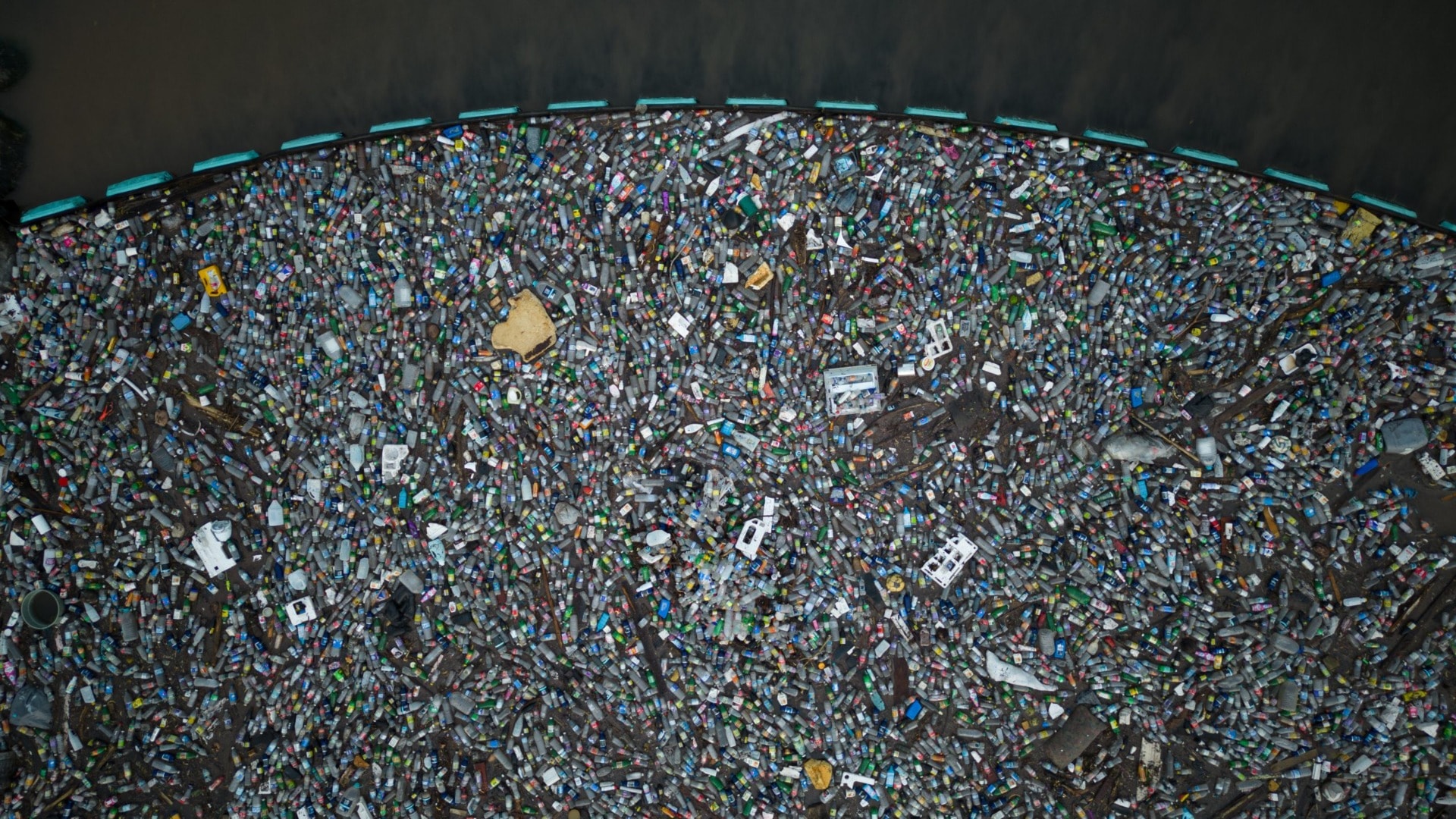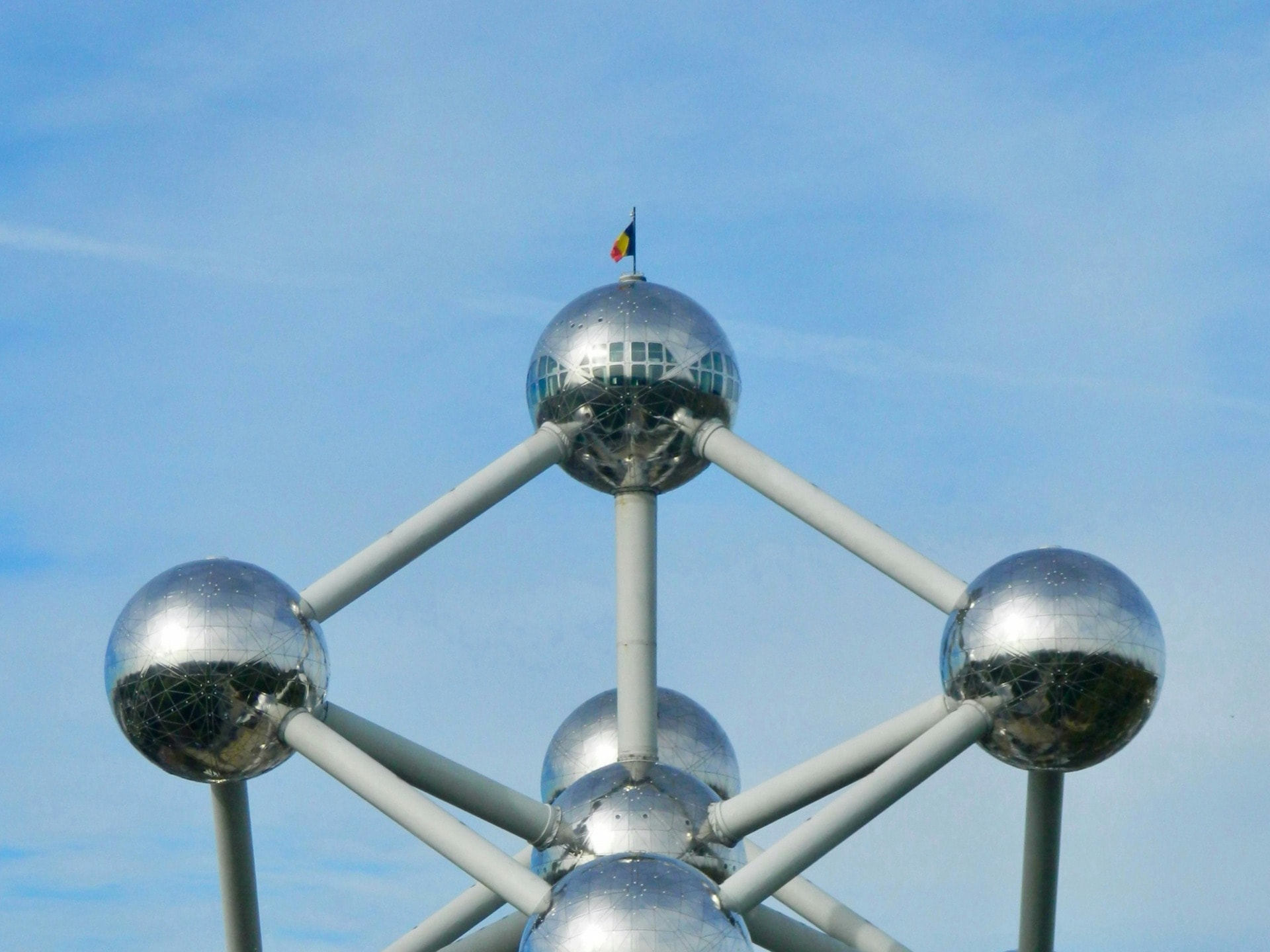Allegations of sexual abuse cover-up have lately become the weapon of choice to attack the Catholic Church and Pope Francis. The problem with this weapon is that it too often relies on largely unfounded assumptions, of the “he says, she says” variety. The sexual abuse is, of course, very real and deeply shocking. But the cover-up in every case? Not so much. And in any case, cover-up is always hard to prove.
This is precisely what Archbishop Carlo Maria Viganò, a top Vatican diplomat, former Nuncio in America, did in an 11-page long letter of accusations: He accused the Pope and several cardinals and bishops of cover-up of sexual abuse. The problem is that Viganò’s allegations are unverified.
When it was published on August 26 in the National Catholic Register and other media, it was a bombshell that shook the Catholic community not just in the United States but across the world. The letter was intentionally designed to be as scandalous as possible, citing bishops and cardinals by name, zeroing in on former Cardinal Theodore McCarrick in particular. And, shockingly, concluding with a call for the Pope’s resignation:
“In this extremely dramatic moment for the universal Church, he must acknowledge his mistakes and, in keeping with the proclaimed principle of zero tolerance, Pope Francis must be the first to set a good example for cardinals and bishops who covered up McCarrick’s abuses and resign along with all of them.”(p.11 of his letter – in bold and underlined in the original)
The Pope did not dignify his accuser of an answer. On the plane back from Ireland, he told reporters, “I will not say a single word about this, I believe the statement speaks for itself.”
The latest news from Italy is that the Pope is saddened (“amareggiato”) by the accusations but is not remotely thinking of resigning. McCarrick’s replacement in Washington, Cardinal Donald Wuerl, immediately found himself in the eye of the storm.
So what happened, has Viganò’s letter unleashed a storm in a teacup?
Not quite a teacup. Many people wondered why Viganò hadn’t published his letter before. The answer is that it was timed to inflict maximum damage to the Pope’s image, coming out a week after the Pennsylvania grand jury report:
And the Pope was traveling back from Ireland when Vigano’s letter hit the news. The visit had not been easy. The trip to Ireland was seen as hugely symbolic as Ireland, once a bastion of the Catholic Church, has now abandoned the Church’s teachings by legalizing divorce and same-sex marriage and lifting a ban on abortion. This was a country where 90 percent used to attend Sunday mass, now thirty percent do.
People had expected him to announce new measures to protect children. They were disappointed. The Pope was apologetic and repeatedly offered his commiseration. But for many, that was not enough. They wanted action from the Church, not words. Yet, the Pope in his last speech publicly acknowledged the crimes:
If Viganò’s aim was to amp the pressure on the Pope, he certainly succeeded.
It is also clear that Viganò’s attack on the Pope is part of a broader conservative strategy to discredit Francis.
According to Reuters, conservative media outlets immediately obliged in spreading the news and, as we have seen, a power clash ensued, with control of the Church as the prize. A senior Vatican prelate is reported to have said, on condition of anonymity : “The conservatives have declared war and they are convinced they can reform the Church with a frontal attack.” Alexander Stille, an expert on Italy and professor of international journalism at Columbia University agrees: “Obviously Viganò is being used as a weapon by a whole coterie of people who can’t stand Pope Francis and the changes he wants to make to the Church.”
Should anyone doubt that Viganò is into a bigger game, it is enough to observe the immediate reaction of conservative prelates in the United States who all rushed to his defense. Among them, Archbishop Charles J. Chaput of Philadelphia, a noted traditionalist. He vouched for Viganò in a statement from his spokesman saying he “found his [Viganò’s] service to be marked by integrity to the church.”
After all, the Pope is seen by many as a paladin of truth and justice, often defending immigrants and most recently standing against the separation of children from their parents:
The Pope’s encyclical on climate change shook the conservative world, especially in the United States, when it came out in 2015:
For cultural and religious conservatives, he is seen as a radical, a Marxist, in short, the enemy. Outside of the Church, It would suit conservative populists to see the Pope weakened. Inside the Church, traditionalists, chief among them the American Cardinal Burke, at the root of destructive tensions some years ago when he was cardinal-patron of the Order of Malta, are seeking to regain power.
The Pope is indeed facing a crescendo of sexual abuse revelations. Aside from the recent event in Pennsylvania, there was, in April, the scandal in Australia where Cardinal Pell is to stand trial for sexual offenses. In May, it was Chile where 36 cases of abuse are investigated. And now the news that Illinois Attorney General Lisa Madigan is launching a new investigation of how the Chicago Roman Catholic Archdiocese has handled priest sex investigations.
And a month ago, the latest event that touched the Pope: Cardinal McCarrick’s resignation after an investigation found evidence he had abused a teenager 47 years ago when he was serving as a priest in New York. This was a shock. McCarrick belonged to the College of Cardinals where resignations for any reason are extremely rare – the last one was Louis Billot in 1927, because of political reasons. He was the only person to do so in the twentieth century, McCarrick is the first in the 21st century.
Small wonder the Pope is pressured to show that he is serious about cracking down on bishops and cardinals.
In this context, Viganò’s letter of accusations was the last straw.
Viganò’s Allegations of Sexual Abuse Cover-ups and Secret Homosexual Networks: How Credible?
The letter is likely to boomerang. If one does what the Pope counsels and reads it, drawing one’s own conclusions (I did), it is clear that the letter is little more than a long rant (7,000 words, eleven pages), woefully lacking in any real substance.
The letter is available online both in English and in its original Italian. Be warned, it’s not an easy read. The tone is sanctimonious, holier-than-thou. The text is peppered with baseless accusations. I couldn’t find a shred of evidence anywhere. Instead, he refers by name to people he feels are accomplices in the cover-up of sexual abuse, including of course the Pope.
The list of names is a clever ploy, it ensures that people will share the information. Everybody loves gossip, especially if it badmouths prelates.
Viganò certainly badmouths the Pope. Consider the crucial scene that forms the basis of his accusation.
Viganò recounts how when they first met in 2013, after the Pope was elected, he had one long meeting (40 minutes) during which the Pope asked him about Cardinal McCarrick. He says he told the Pope that there was a “thick dossier” incriminating McCarrick. This, the mere fact that he told the Pope about a dossier, is proof, he argues, that the Pope knew about the McCarrick problem all those many years ago and did nothing to punish and remove him.
This is an extraordinary simplification (misinterpretation?) of what must have happened.
First, consider that Viganò’s conversation with the Pope was private. There are no witnesses and we only have Viganò’s word. But we do know certain facts. In 2013, the Pope had just arrived in Rome and here he was, talking to his “ambassador” (nuncio) in Washington. It would only be natural for him to ask Viganò’s opinion about McCarrick, the Washington cardinal whose reputation was already seriously damaged, as everyone at the time already knew.
But what did Viganò tell him that was concrete, that he might act upon? He merely said that there was available somewhere a “thick dossier” and implied there were crimes. Undoubtedly the Pope did get hold of those documents later but probably did not inform Viganò, why should he?
If he didn’t demote McCarrick right away, he had plenty to do, battling against a series of scandals, and dealing with an incredibly complex situation in the Curia that is famous for its fighting factions.
As any CEO of a big multinational corporation will tell you, you don’t walk into the top job and start firing everyone on sight. You don’t transform the cleaning up of an administration into a witch hunt. You first ask questions of everyone you meet, you try to find your bearings – which is all he did with Viganò when they met.
Restructuring a bureaucracy is the most demanding task in the world, especially a bureaucracy under siege as the Vatican is, assaulted by revelations of sexual abuse and corruption.
It’s like having a house on fire, and you’re running around with the fire hose, but the water doesn’t reach in every room, and some rooms end up in smoke. Clearly that’s what happened. For whatever reason, McCarrick probably survived the first wave of clean-ups. It’s hardly a question of cover-up on the part of the Pope.
Has the Pope actually restructured the Curia? He certainly has brought deep changes in a very short time:
Note he has revised the system to handle sexual abuse accusations. However, before the new structures can give result, you need to give them time. Something Viganò is not prepared to do. He has a very special view of what is happening inside the Church.
Viganò’s Conspiracy Theories
Like many conservatives – see for example, Alex Jones’ Misinfo-Wars – Viganò is a strong believer in conspiracies. He sees the Church falling in the hands of secret networks of homosexuals, in his words:
These homosexual networks, which are now widespread in many dioceses, seminaries, religious orders, etc., act under the concealment of secrecy and lies with the power of octopus tentacles,and strangle innocent victims and priestly vocations, and are strangling the entire Church.
Naturally, he calls for the eradication of “homosexual networks present in the Church”.
This is perhaps the most disturbing aspect of his letter. Some priests may be gay but that doesn’t make them automatically members of a secret network or serial sexual abusers. In this regard, it is worth mentioning the ‘Causes and Context’ study by the John Jay School of Criminal Justice, released in 2011, that concluded:
‘The clinical data do not support the hypothesis that priests with a homosexual identity or those who committed same-sex sexual behavior with adults are significantly more likely to sexually abuse children than those with a heterosexual orientation or behavior.’
Also, the whistleblower mentioned in Vigano’s letter, Father Boniface Ramsey who had first denounced McCarrick 20 years ago, said that, while he supports Viganò’s allegations regarding McCarrick, he doesn’t believe there is a homosexual network seeking to overpower the Church.
Viganò, a Man with a Grudge
A letter of accusation to be credible needs a reliable author, one with a peerless reputation. Not the case with Viganò. His reputation is not as unblemished as Archbishop Chaput of Philadelphia would like us to believe.
After reading the letter, it is difficult to escape the impression that this is the work of someone with an altered vision of the world. And what we know of his long life (he is 77 years old) is not reassuring.
To use New York Times columnist Jason Horowitz’ apt phrase, Viganò is a “cultural conservative” born into a wealthy traditional Catholic family in Varese, Northern Italy. As a young priest, he joined the Vatican diplomatic corps and was first sent abroad in Iraq in 1973. Ordained archbishop in 1992, he no doubt dreamed of becoming a cardinal. In 1998, after a stint in Africa, he was back in Rome, working in the Secretariat of State (the equivalent of the Ministry of Foreign Affairs). In 2009 he was in charge of the budget, a task he is said to have accomplished brilliantly.
So far, so good. But his management style made enemies, rumors circulated that he was promoting his nephew. There was even an anonymous report in the newspaper Il Giornale, that he had set his eyes on the Vatican’s security services.
He was sent away from Rome in 2011 by then Secretary of State Tarcisio Bertone, with a tainted reputation, the cardinal’s hat definitely out of reach. He even tried not to leave, saying he had to look after a sick brother. Unfortunately, it was a poor excuse as the brother happened to be in good health and it was known that the two brothers fought over a family inheritance, often landing in court. Soon after, some of his disgruntled letters surfaced in the context of the famous Vatileaks scandal.
That is how he came to Washington as Nuncio, the chief Vatican diplomat in the United States. Rumors followed him, as he managed to somehow keep his apartment in Rome against all rules. Worse, he found himself accused of sexual abuse cover-up, more precisely, of hindering a sexual investigation in Minnesota. This is an accusation he must have expected because he was quick to deny it, a few days after publishing his letter (on August 28).
The fallout with the Pope did not happen right away. It happened in 2016 during his trip to the U.S. when Viganò set up a meeting with Kim Davis, nearly derailing the trip. Davis was the Kentucky clerk that refused to issue marriage permits to same-sex couples. Shortly after, the Pope removed him from his job in Washington. Back in Rome, he lost the apartment to which he actually had no right and was invited by the Pope to return to his diocese (Varese).
As a result of all this, there are good reasons to believe that Archbishop Viganò felt he had some scores to settle.
But there could be more to it.
Viganò continued to travel back and forth between Rome and Varese meeting conservative journalists over the past two years, and this summer, he handed his letter to a conservative Vatican reporter, Marco Tosatti, asking for his help to publish it.
Update (3 September): Viganò’s Accusations are Moving to a New Target
As Archbishop Viganò’s accusations floundered, he quickly moved on to a new target: The story around Kim Davis, claiming he was unfairly accused and fired by the Pope. On Friday August 31, the conservative website LifeSiteNews published another one of his bomb-letters, this time entitled: “Pope Francis met privately with Kim Davis: here is what really happened”
On 3 September, the New York Times pointed out in an explosive article that the Pope’s spokesman, Father Lombardi, (involuntarily?) confirmed part of Viganò’s story, in the sense that he had indeed obtained the go ahead to set up a meeting between Kim Davis and the Pope. But what Viganò fails to report is that he hadn’t fully briefed the Pope on who this woman was and what meeting her might mean in terms of the Pope’s image in the U.S. He didn’t explain she was a “cause célèbre” for conservative traditionalists or that she had been married four times. When the Pope learned about her multiple marriages, he was reportedly furious.
Bottom line, when your ambassador in the country you visit makes a mistake, causing you to meet a person that sends out the wrong signals in terms of your own policies and strategic aims, you have no choice but fire him. And that’s what the Pope did. He could no longer trust his man in Washington. Whether Viganò organized the meeting with Kim Davis knowing fully what he was doing because he was following a conservative policy line against the Pope, or whether he did it through lack of judgment, we shall never know. In either case, he was at fault and the Pope had every right to remove him from Washington.
The Importance of Cultural Context: Our Sexual Abuse Zeitgeist
The long-unfolding story of sexual abusewithin the Catholic Church needs to be placed in its historic, cultural context. When revelations of sexual crimes against minors within the Church began in the late 1990s, news of paedophile networks outside the Church also exploded, notably in Belgium with the infamous child killer Marc Dutroux (who recently enraged families with a letter offering to “answers their questions” – an obvious ploy to obtain early parole).
Child abuse is unfortunately widespread – there is evidence that in the United States alone, there are some 42 million of “adult survivors” of sexual abuse.
Ours is also the society in which the #MeToo movement suddenly exploded two years ago. Now it has morphed “in reverse” with women being accused of sexual assault and harassment. The most talked about cases are those of Asia Argento with an underage actor (he was 17) and Professor Avital Ronell, a respected scholar and humanities professor at NYU, with Nimrod Reitman, a graduate student she supervised.
We seem to be living in a sexual abuse zeitgeist. In a remarkable New Yorker article, Masha Gessen, the author of several best-selling books including “The Future Is History: How Totalitarianism Reclaimed Russia,” gave the perfect definition of #MeToo :
“#MeToo is both a signal of broad social change and a call for it.”
The parallels with the Church sexual abuse scandals are striking. We find the same tendency to believe accusations without looking for corroborating evidence. This is not to say that there is no evidence or that there are no victims. Obviously, there are victims and many of them; there are people who have suffered deeply in their flesh, heart and soul; people who were young and innocent and whose lives have been destroyed. Clearly, this cries for justice.
But to merely repeat gossip is not to furnish evidence. Archbishop Viganò displays precisely this tendency throughout his long letter. Instead, what is needed, as Masha Gessen argues, are changes to the structures that have allowed these crimes to happen. A difficult, time-consuming task but not impossible.
This is the task the Pope has embarked on. Let’s hope he is allowed to finish it and that groundless accusations like Viganò’s won’t derail him.
Ultimately, our whole society needs to change. We all need to work at protecting our children, and for “adult survivors” of sexual abuse, help in the healing process:
EDITOR’S NOTE: THE OPINIONS EXPRESSED HERE BY IMPAKTER.COM COLUMNISTS AND/OR BY THOSE INTERVIEWED ARE THEIR OWN, NOT THOSE OF IMPAKTER.COM.


